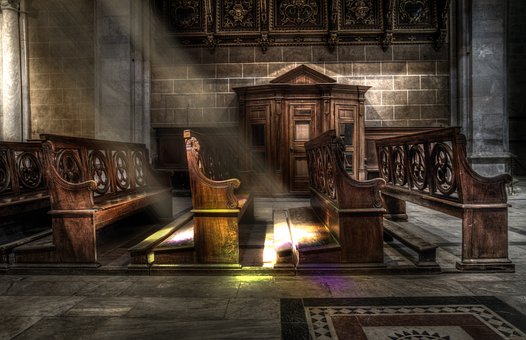For better or for worse, Inuyasha is the perfect poster child for anime from the late 90s and early 2000s, when the industry was struggling with technology.
The Inuyasha series is an iconic anime from the turn of the millennium, a time when technology was advancing, but the on-air series just hadn’t quite caught up. Here’s everything that makes Inuyasha such a perfect case study of anime from that era, both good and bad.
Created by Rumiko Takahashi, also known for Urusei Yatsura and Ranma 1/2, Inuyasha was a series that broke some of anime’s strict demographic lines. While the story was ostensibly a fantasy action series for young boys (shonen), it had a heavy emphasis on romance, which also made it more appealing to girls. The series’ casting of cute demon boys certainly hasn’t hurt its popularity with female fans either, and the point-of-view character being modern schoolgirl Kagome Higurashi in a fish out of water plot has sealed the deal. Inuyasha was a major part of Adult Swim’s anime offerings at the time, and the series garnered a large following thanks to late-night airings on the channel.
Inuyasha’s plot is certainly interesting, dealing with concepts like reincarnation and revenge, creating love triangles, and introducing many characters who each had their own compelling reasons to be involved. As a traditionally animated series, however, Inuyasha also suffered from many budget-saving tactics common at the time. Inuyasha’s attacks often take place in the dimension of flashy backgrounds, so they can be reused over and over again in different settings. The show’s re-use of animation is arguably its biggest issue today; it was designed to be watched from week to week and often took up significant portions of an episode recapping shared history and plot points, such as how Inuyasha first met Kikyo and sealed himself to the Tree of Ages. Trying to binge-watch Inuyasha will likely result in a lot of fast-forwarding through footage that’s been viewed a dozen times or more in some cases. Inuyasha is also from that awkward period where widescreen anime was non-standard, so the beginning of the series is in 4:3 aspect ratio, while the follow-up series that finished the manga adaptation in 2009, Inuyasha : The Final Act, is widescreen .
Inuyasha is still a classic
Despite these flaws, Inuyasha is still a classic series of the era. As noted above, characters tend to be its strongest quality. The series has a memorable cast, all of whom are quite distinct from each other. While Naraku is certainly a one-note villain, those working under his control like Kagura tend to be more complex, yearning for freedom and trying to rebel while doing the letter of his orders. And while Inuyasha might not be known for his fight scenes like some of his contemporaries were, the show still has some very cool fighting, and Inuyasha himself has a decent variety of abilities at his disposal. Its new sequel series, Yashahime, is fairly faithful to the original in every way, even down to the pacing issues.
Anime fans who haven’t watched Inuyasha should give the series a try, if only because it has a little something for everyone. While the original might be a little dated in terms of pacing and animation style, it brings with it everything that helped make the anime the massive international hit it is today.
We would love to thank the author of this write-up for this remarkable web content
Inuyasha is the epitome of turn-of-the-millennium anime | Pretty Reel
Discover our social media profiles and the other related pageshttps://nimblespirit.com/related-pages/

